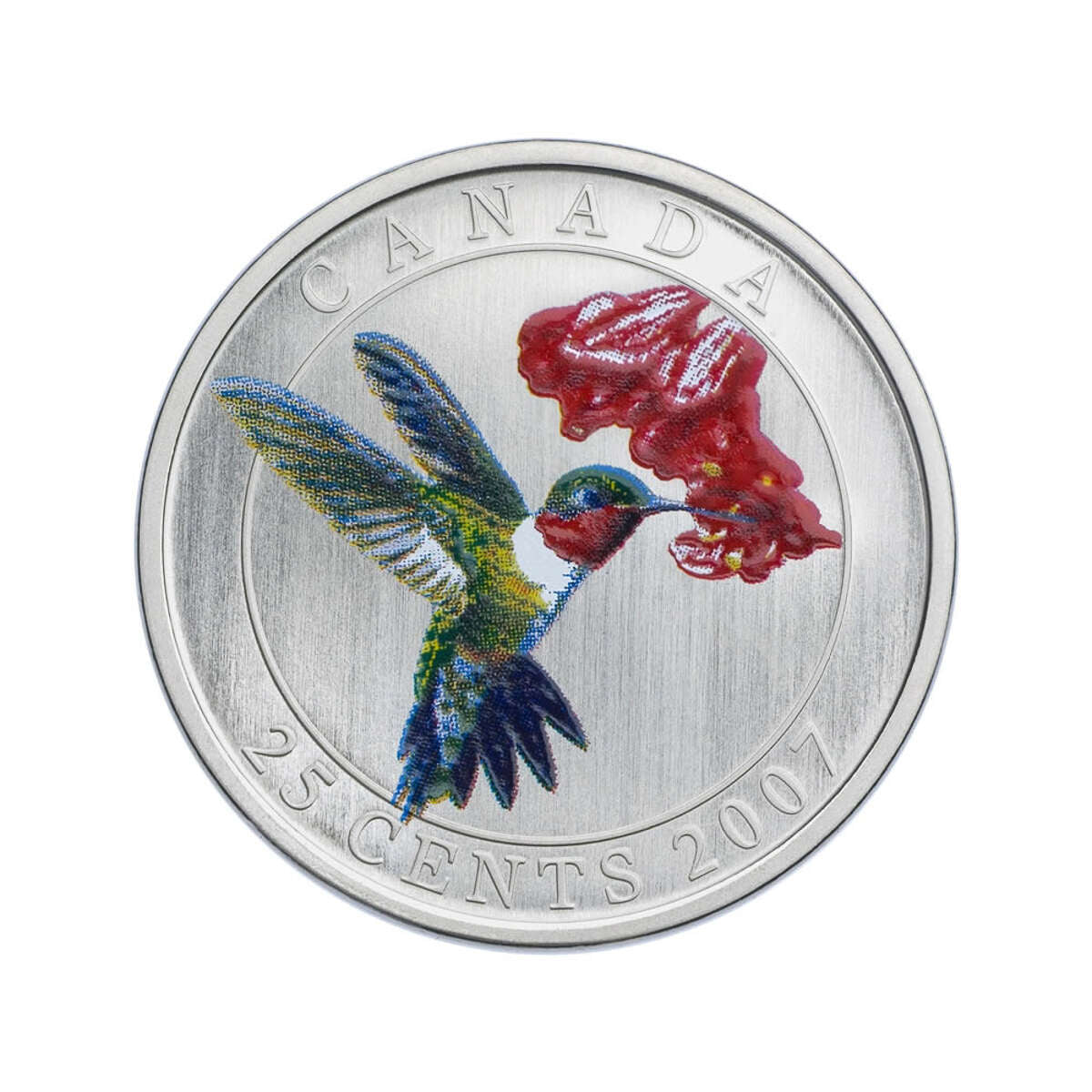Description
It is one of summer's most animated sights; a hummingbird flitting about the garden—up, down, left, right, even backing up -- often hovering in one place as it sticks its long, slender bill deep into a flower for a drink of nectar.
Not much bigger than a large moth, the hummingbird packs surprising punch for its diminutive size. It aggressively defends its food supply and territory, successfully chasing away much larger intruders with its quick, unpredictable maneuvers and the unsettling hum of its wings beating 55 to 75 times per second.
Even an 800 km (500 mi) expanse of water is no match for this sturdy little bird that readily crosses the Gulf of Mexico to its wintering grounds in Central America—and returns north the following spring to mate.
Of the five species that live in Canada, the Rubythroated Hummingbird (Archilochus colubris) is the best known and most widely distributed, delighting those quick enough to spot it throughout eastern Canada and as far west as southern Alberta.
Not much bigger than a large moth, the hummingbird packs surprising punch for its diminutive size. It aggressively defends its food supply and territory, successfully chasing away much larger intruders with its quick, unpredictable maneuvers and the unsettling hum of its wings beating 55 to 75 times per second.
Even an 800 km (500 mi) expanse of water is no match for this sturdy little bird that readily crosses the Gulf of Mexico to its wintering grounds in Central America—and returns north the following spring to mate.
Of the five species that live in Canada, the Rubythroated Hummingbird (Archilochus colubris) is the best known and most widely distributed, delighting those quick enough to spot it throughout eastern Canada and as far west as southern Alberta.





